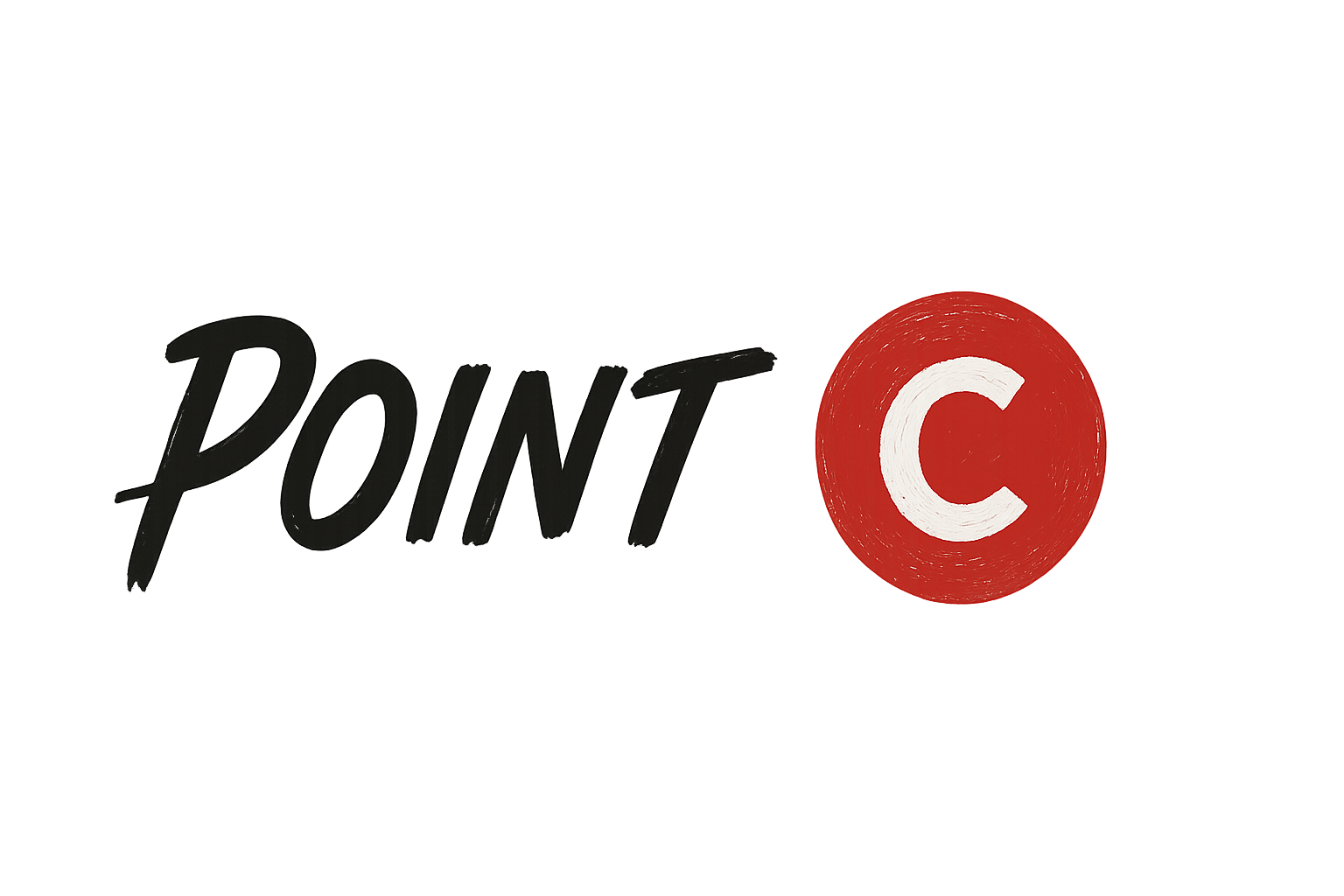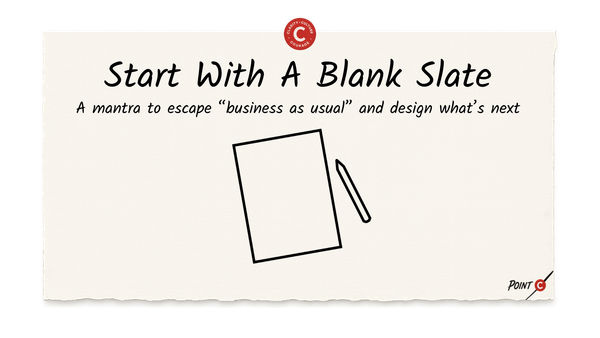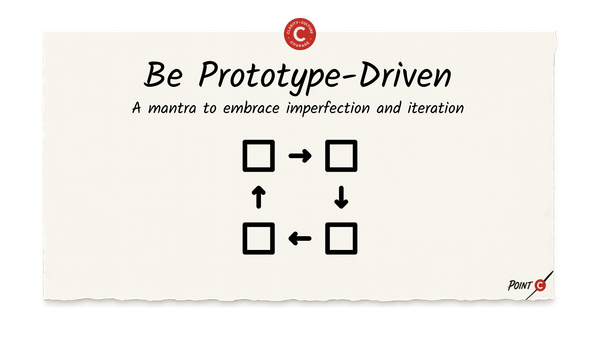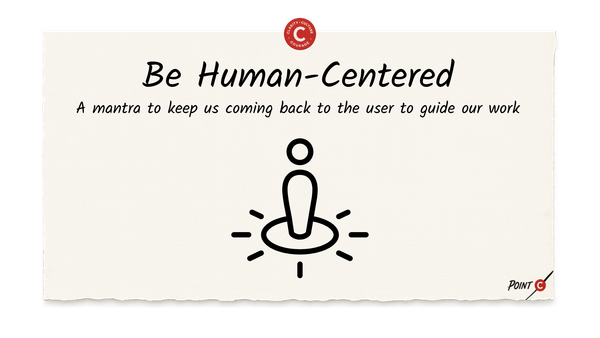The Idea Bucket
A way for your teams to get ideas out of their heads
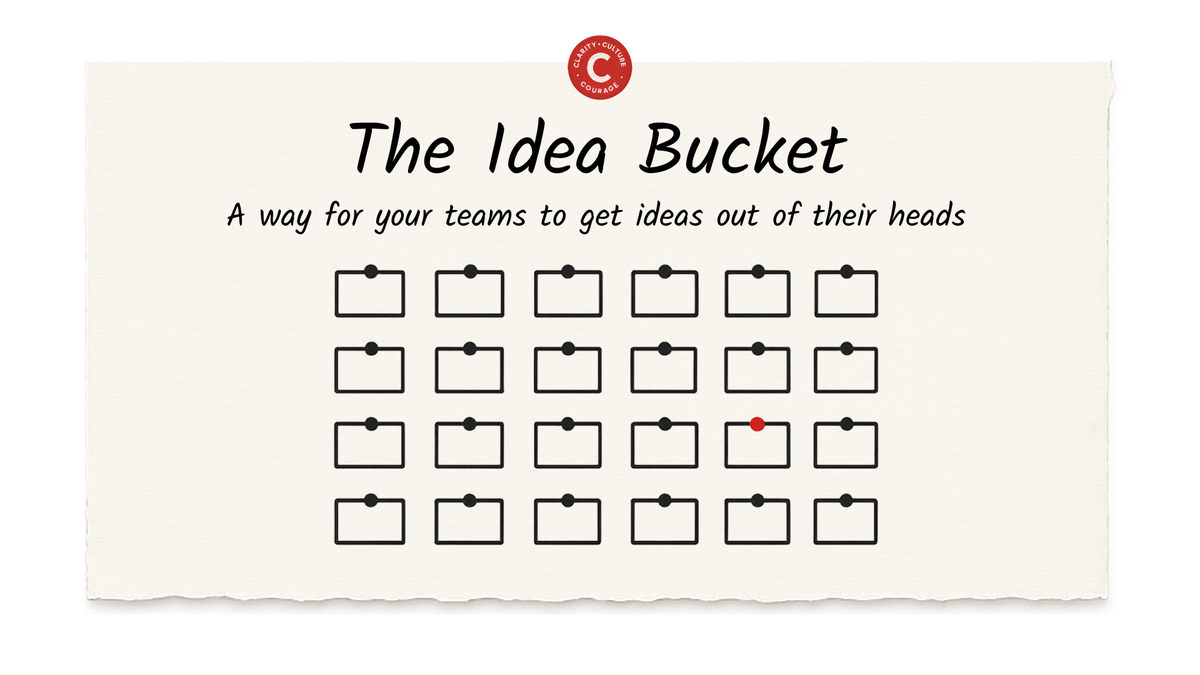
Welcome Back to The Idea Bucket
Last week, we talked about The Half Sheet — a simple, powerful way to turn abstract ideas into concrete prototypes. I heard from many of you who tried it, and the theme was clear:
“I thought the idea in my head was solid. But once I started sketching, I realized how many gaps there were in my thinking - and how generative the act of sketching was to fill in those gaps.”
That’s the magic of the Half Sheet — it surfaces clarity, fast.
But what do you do once your team starts generating lots of Half Sheets? Where do they go? How do you keep them visible? And how do you make sure they don't just get lost in a folder, a desk drawer, or a Google Doc that never gets revisited?
That’s where today’s framework comes in.
In this post, I’m introducing The Idea Bucket — the shared container that gives Half Sheets their full power over time. It’s how you build momentum, preserve creative energy, and let ideas evolve without rushing to choose too soon.
And yes — it’s also why this newsletter is called The Idea Bucket. Because that’s exactly what I hope this becomes for you: a growing, glanceable wall of frameworks. A well you can draw from when you’re stuck, leading, or building.
Let’s dive in.
What Is an Idea Bucket?
An Idea Bucket is a shared, persistent, frequently glanced at space where your team stores and sees its ideas — together, in one place.
It can be physical (a whiteboard, a wall, a foam core board) or digital (a shared Miro board). But the key is that it’s visible, persistent, and structured for serendipity.
The purpose of the Idea Bucket isn’t to decide. It’s to capture, hold, and revisit ideas without rushing to pick a winner too early.
Each Half Sheet goes into The Idea Bucket — not as a commitment, but as a contribution. It says: “Here’s something I think is worth exploring.”
Over time, your Idea Bucket becomes a glanceable wall of:
- Early-stage prototypes
- Convergent themes
- Divergent directions
- Creative tension
- Potential bets
Instead of burying ideas in decks or Slack threads, your team builds a visible, evolving record of its thinking — one that encourages remixing, grouping, and shared ownership.
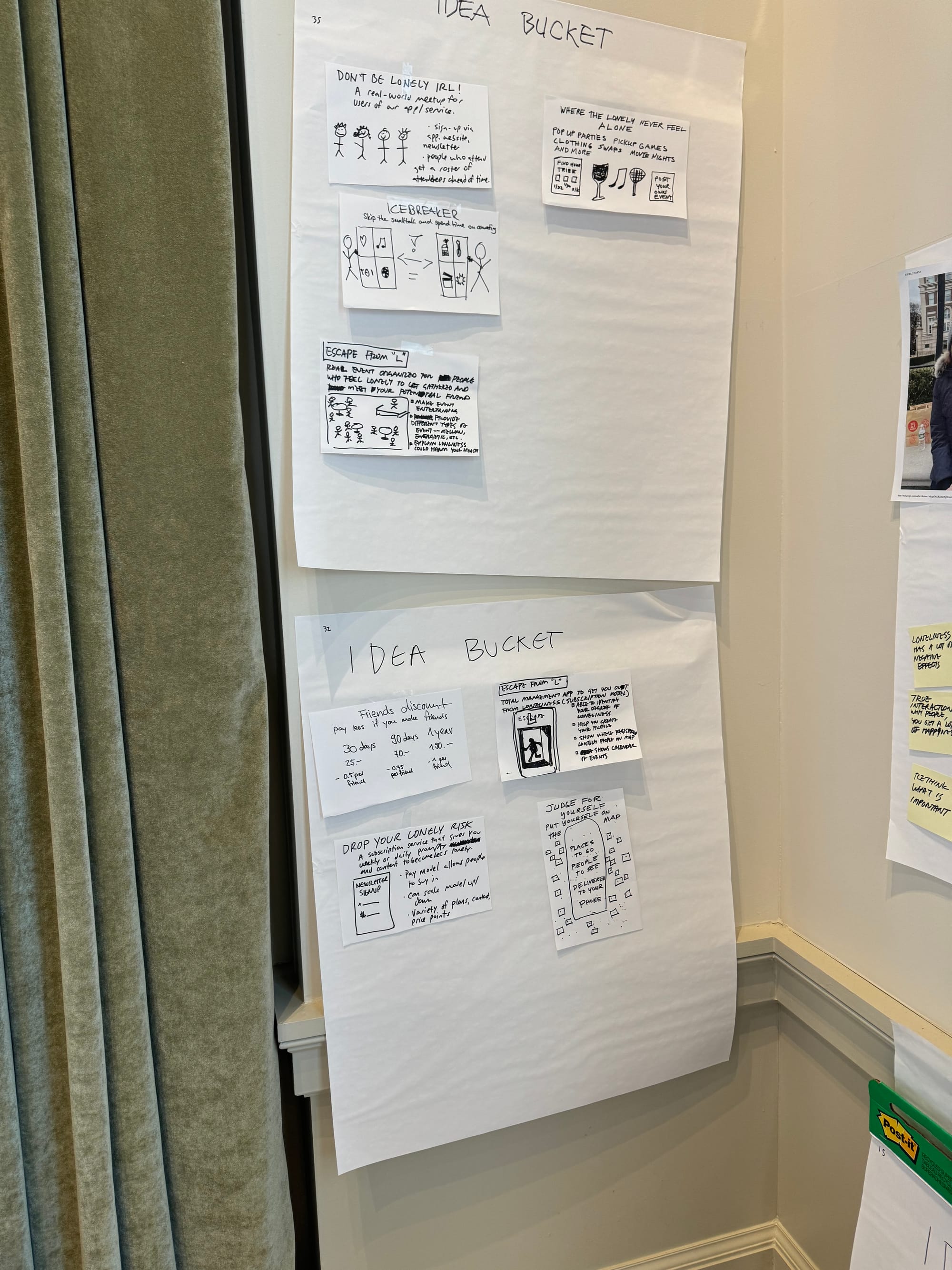
The Power of The Idea Bucket
The Idea Bucket isn’t just where you put Half Sheets. It’s how you build a visible subculture of innovation — one that favors exploration, remixing, and shared ownership over premature convergence.
Here’s what it unlocks:
1) Clarity Without Commitment
Ideas often get stuck between “just talking” and “making a decision.” The Idea Bucket creates a third space — where ideas are clarified without being locked in. It gives teams room to think without over-attaching. (It also gives you a place to send that teammate who won't stop pitching the same abstract idea - "Great idea! Make a Half Sheet and put it in The Idea Bucket.")
2) Permission to Explore Widely
Most teams under-explore. They jump to the first feasible solution. But when Half Sheets are collected side-by-side, The Idea Bucket makes it clear: there are always more options. Divergence becomes a visible habit.
3) Intentional Serendipity
An Idea Bucket full of imperfect but visual Half Sheets sparks creativity when you least expect it. You might glance at a forgotten sketch and suddenly see the missing piece to a completely different problem. That’s why persistence matters — ideas have to be present to collide.
4) Shared Ownership
When everyone contributes Half Sheets to a central space, ideation becomes collective. The best ideas often come from remixing — not from one brilliant originator. The Idea Bucket gives your team a shared starting point for building together.
5) Momentum Through Visibility
Too many ideas disappear into forgotten folders. The Idea Bucket keeps them in view — ready to be remixed, prioritized, or tested. This visibility builds a sense of progress, even before decisions are made. And when stakeholders stop by, its easy to show your progress without building a deck and to get rapid feedback on directions without them appearing to be too precious.
6) Rapid User Testing
Each Half Sheet is a highly portable prototype. Bring a stack into the field. Let users compare directions side by side. Show them The Idea Bucket and invite them to add to it. When your Idea Bucket becomes co-owned by your users, innovation accelerates.

Your Challenge This Week
It’s time to build your Idea Bucket.
This week, your goal is to create a shared space where your team’s Half Sheets can live, side by side — ready to be revisited, grouped, and tested.
Step 1: Choose your format
You can build your Idea Bucket physically or digitally — or both.
Physical:
- Find a wall, whiteboard, or foam core board that can live in your team space
- Add a title at the top: Our Idea Bucket
- Decide how you’ll affix your Half Sheets. They can be taped, pinned, or held with magnets. You’ll want to be able to move them around over time — so if you’re using tape, I recommend Drafting Dots.
Digital:
- Set up a shared Miro board
- Create a space where Half Sheets can be easily added, moved, and grouped
- Establish team rituals to keep it visible. (For example, open the board at the start of your weekly team meeting. Or set your browser homepage to The Idea Bucket.)
Both:
- It’s hard to beat the power of a physical Idea Bucket in a persistent team space. And the act of sketching Half Sheets together in the same room can’t be beat.
- But many teams today work in a distributed or hybrid fashion — or only gather in person once a week. That makes a digital Idea Bucket crucial — even if it’s just used as a backup for the physical Idea Bucket.
Whatever you decide, the goal is visibility and persistence — not perfection and comprehensive documentation.
Step 2: Fill the Bucket
Invite your team to contribute their Half Sheets — ideas they’ve already sketched, or new ones sparked this week. Make sure everyone follows the same format: headline, tagline, visual.
Step 3: Step back, group, and reflect
Once you have 10 or more Half Sheets side by side, start playing with them:
- What groupings, themes, and directions are emerging?
- Which ideas feel most alive — and which feel like they need more sharpening?
- What directions are missing?
You don’t need to make decisions yet. You’re creating a space where good ideas go to percolate, not die in someone’s notebook.
If you set up an Idea Bucket — especially one your team is using in real time — I’d love to see it. Send a photo, a screenshot, or a short story about what surfaced. Just post in the comments below or reach me at theideabucket@pointc.co.
Next Week
Next week, we’ll talk about how to evaluate the ideas in your Idea Bucket — without killing creativity too early.
It starts by aligning on your selection criteria — before you fall in love with the wrong idea. It’s a simple ritual I call The Selection Stack.
About This Newsletter
The Idea Bucket is a weekly newsletter and archive featuring one visual framework, supporting one act of leadership, that brings you one step closer to building a culture of innovation.
It’s written by Corey Ford — executive coach, strategic advisor, and founder of Point C, where he helps founders, CEOs, and executives clarify their visions, lead cultures of innovation, and navigate their next leadership chapters.
Want executive coaching on this framework or others? Book your first coaching session. It's on me.
